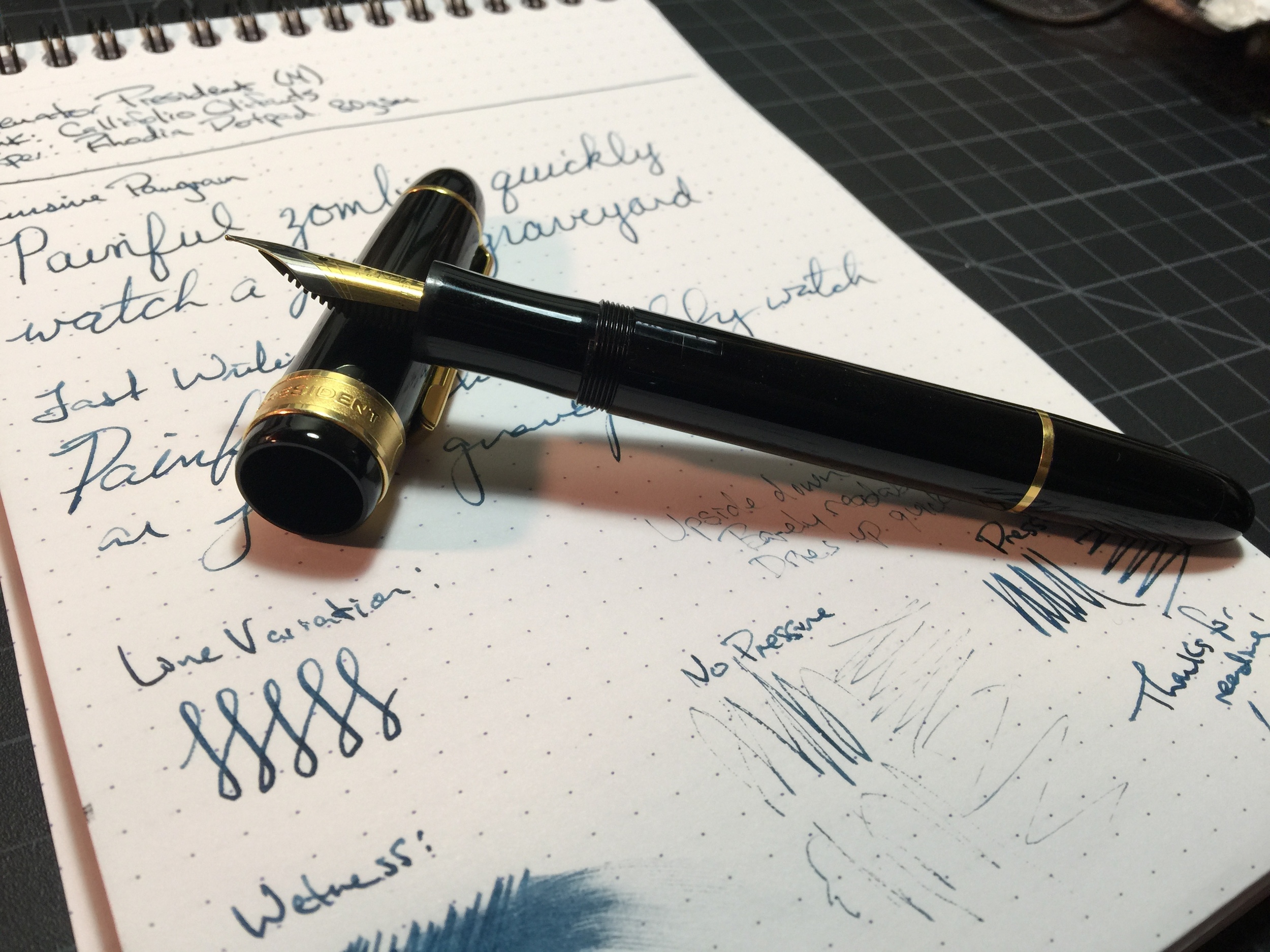Pen Review: Levenger True Writer
Hi everyone! I want to give my apologies for the lack of blog content of late. I was in a pretty good groove as far as posting, and then life kinda happened. I have had a lot of family events going on - my brother and cousin got married, bachelorette parties, an unexpected family death, and a whole lot of work stress with my day job. For those of you that don't know, I suffer from chronic pain due to a condition called Spasmodic Torticollis in my neck, as well as fibromyalgia. With the increased work stress I've had recently, my pain has been a lot worse so it had/has hindered my ability to sit down in the evenings to write from time to time. That said, I am VERY happy to be back, and I hope to keep the content rolling. Thanks for stopping by and I hope you enjoy the review!
Levenger True Writer - Steel Nib (M)
Length Capped: 138mm
Length Posted: 155mm
Length Uncapped: 124mm
Section at Thinnest Point: 14mm
Section at Widest Point: 16mm
Weight w/Ink & Cap: 36.6g
Weight w/Ink & No Cap: 21.5g
Fast Writing: Keeps up very well.
Line Variation: Lots of spring for a steel nib.
Upside Down Writing: Writes well; keeps up, and is only a tiny bit scratchy.
Wetness: Very.
Pros: Nice weight, wet writer, smooth nib, springy nib
Cons: Price, hard starts, section is a little slick
Thanks so much to Clay P. for sending me his Levenger True Writer to review. I really enjoyed using this pen.
*EDIT* Clay was kind enough to clarify for me that this particular True Writer was part of the Metalist line of pens which are no longer produced. The normal line of True Writers which I mention are on sale for $59 right now, are acrylic.
Levenger made its debut in 1987 in Massachusetts. The name Levenger was derived from the combination of the founders (husband and wife) combining their last names. They specialized in creating many proprietary products for the home and office, and eventually made their way into writing instruments.
The True Writer is probably their most well known pen, and features a nice hefty metal body (with a plastic-esque coating) and a German steel nib. I was impressed with how smooth the steel nib performed. It writes nice and wet and I had no issues with skipping or dryness. I did, however, have issues with hard starting - that, coupled with the smoothness leads me to believe that it may be suffering from a bit of "baby's bottom." The pen is a cartridge converter pen, so you can use any bottled ink of your choosing. I used Levenger Cardinal Red for this review - keep an eye out for a review on that ink soon!
The pen itself is very smooth and sleek, and has a very professional/business-like appearance. I've heard these are popular in the corporate realm, and I can certainly see why. The weight and balance are very nice - I didn't experience any fatigue with extended use. The section is a little on the slick side, so that could potentially cause some slipping when writing.
The trim on the pen is minimalistic, which I like. The center band is a chrome-colored metal with the word "Levenger." The finials are just a smooth rounded black "button."
The color itself is a metallic grey with a slick clear coat. I love the color of this pen!
Overall, I really enjoyed writing with this pen. A few rounds on some micromesh to fix the hard starting and it would be even better. For a steel nib, the smoothness is rivaled by very few, and the weight and balance make it a pleasure to hold. The True Writer retails for around $79 normally, but at the time of writing, Levenger has it on sale for $59. If you're looking for a comfortable, smooth, durable writer, I highly recommend you pick one up.




